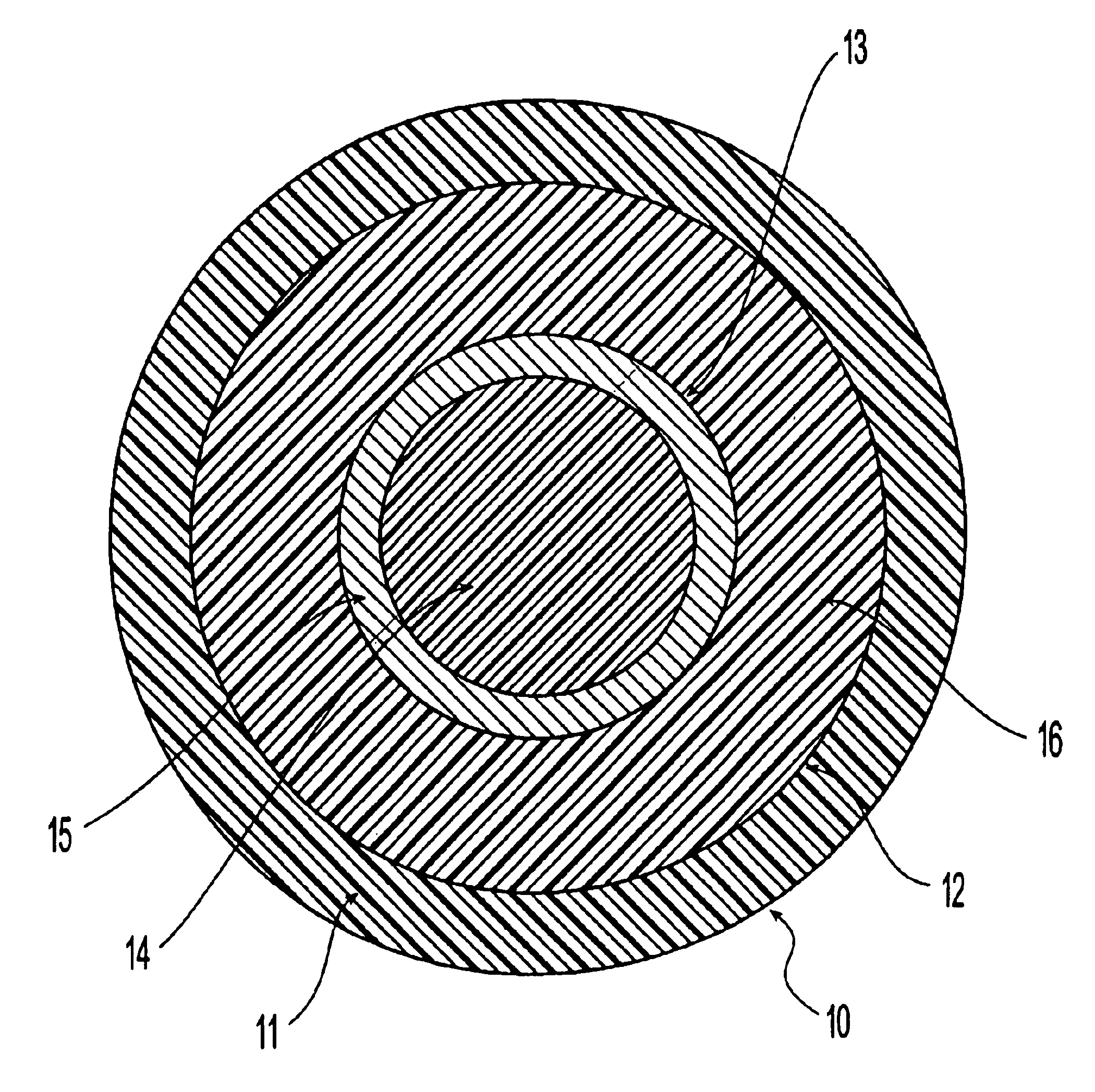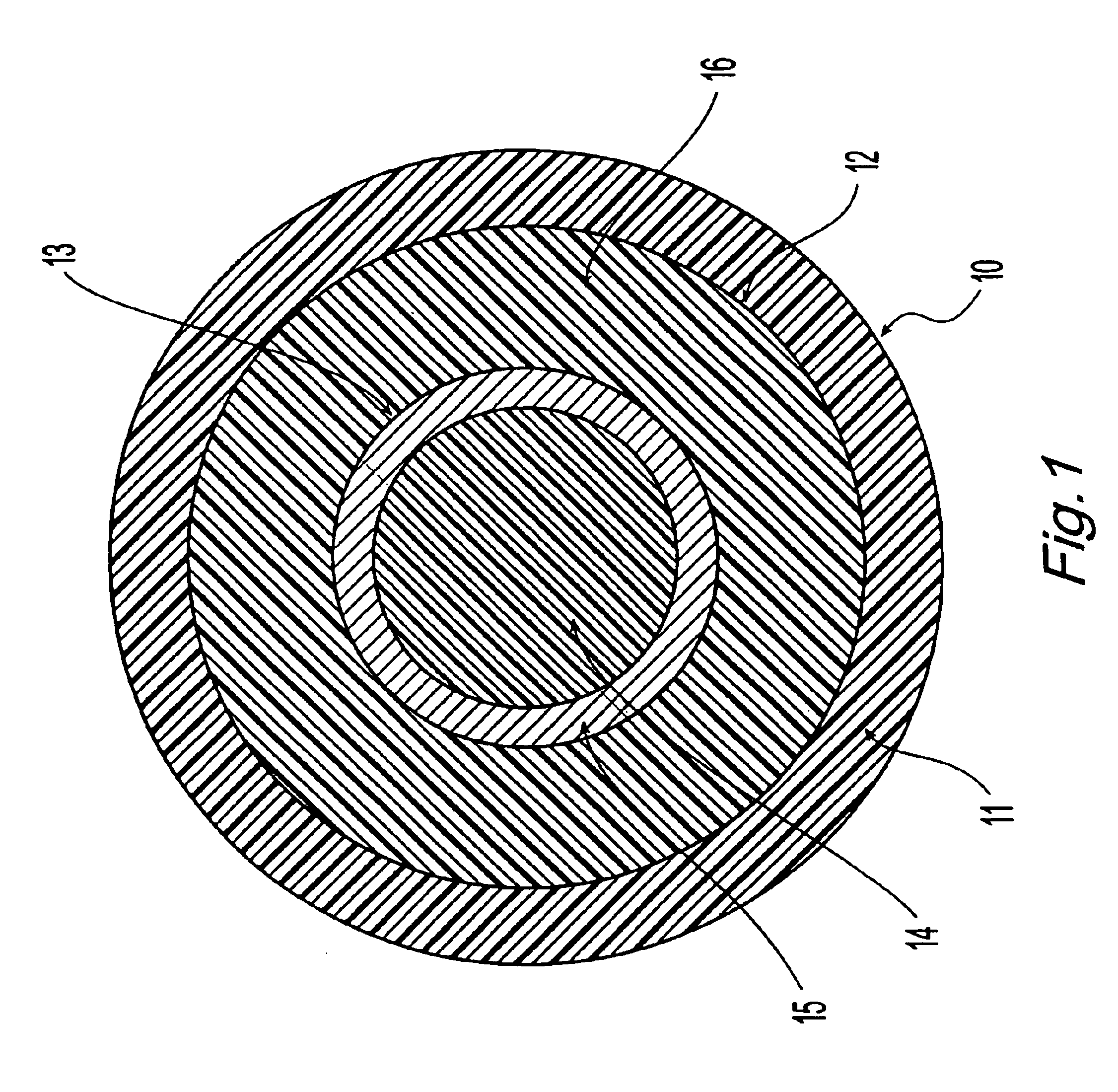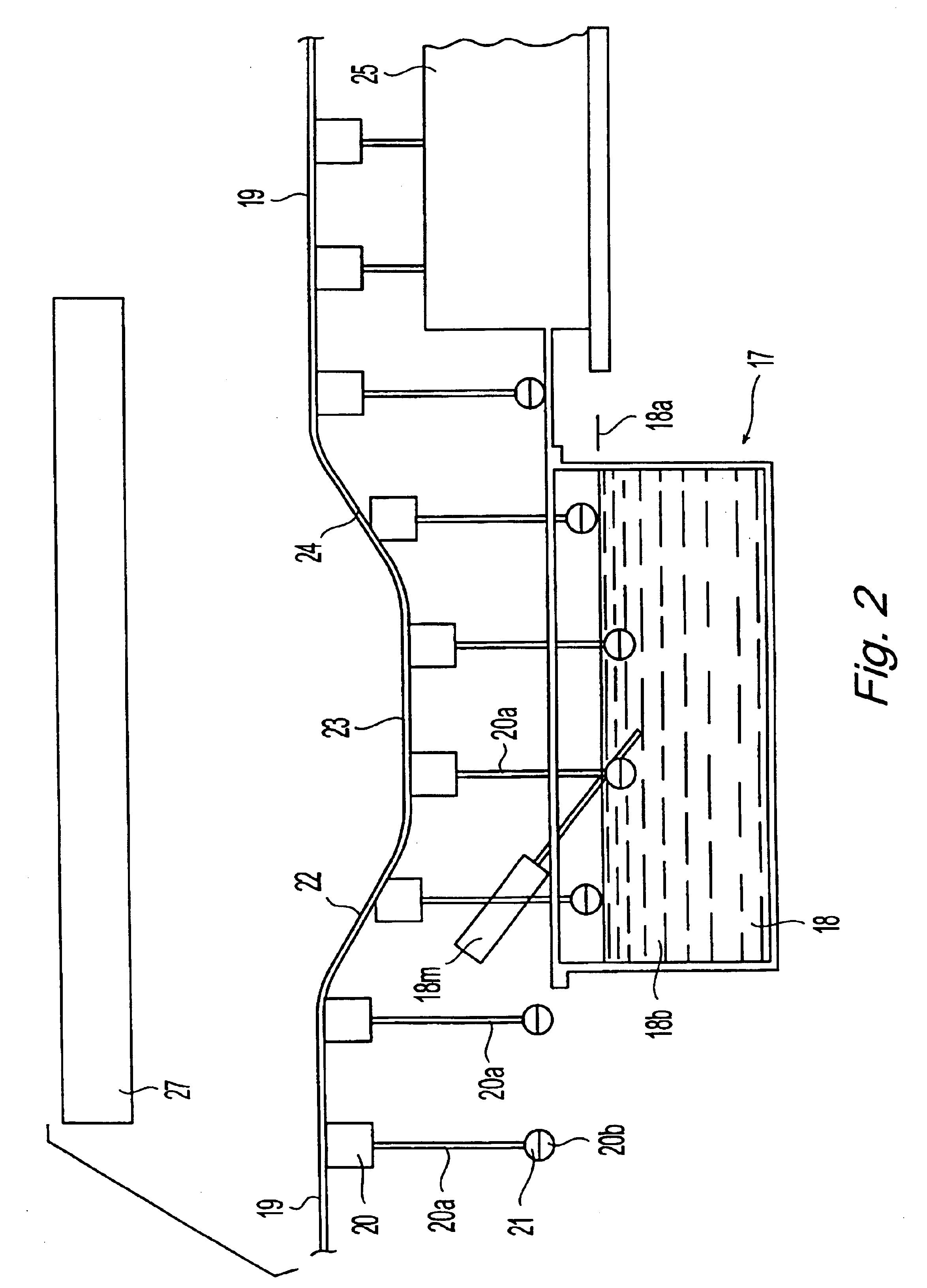[0010]The present invention relates to a
golf ball, and more particularly golf balls that have a multilayer core that provides improved playing characteristics by providing a
cushioning interface between the center and any subsequent
layers. The ball is comprised of a center; a soft, thin,
elastomer latex intermediate layer around the center wherein the intermediate layer is less than about 0.01 inches thick and has a
flexural modulus of less than about 10,000 psi; one or more mantle layers disposed concentrically adjacent the intermediate layer, wherein the mantle layer material comprises a resilient
polymer component; and a cover layer disposed concentrically around the mantle.
[0011]Any soft, elastomeric latex or solution that will dry to form a soft film on the surface of the center or other subsequent mantle layers, can be employed as the intermediate layer. Typical thermosetting latex materials which can be used to coat the cores include low
ammonia natural latex and / or pre-vulcanized natural latex. Natural latex is noted for its combination of high tensile strength, excellent elasticity, tack,
low modulus, and ability to form strong, coherent, wet and dry films.
Natural rubber latex is also relatively
inert, nontoxic, cost effective, compatible with most core and outer shell rubber compounds, and can be air dried.
[0013]A
natural rubber latex, when dried, is softer than either the inner or
outer core compounds conventionally employed in golf ball manufacture. This property is particularly evident when the inner and
outer core compounds are crosslinked and the latex is not. A soft rubber interlayer can serve as a cushioning interface to help improve durability and softness of the ball upon club
impact. A soft rubber interlayer also serves to improve fracture durability, particularly when a strong adhesion between the center and mantle layers does not exist. In one embodiment of the present invention, the intermediate
layer thickness is from about 0.0005 to 0.01 inches. Preferably, the intermediate
layer thickness is from about 0.0008 to 0.01 inches. In another embodiment, the intermediate layer has a
Shore A
hardness of less than about 90. In a preferred embodiment, the intermediate layer has a
Shore A
hardness of less than about 70. Alternatively, the
flexural modulus of the intermediate layer is less than about 3,000 psi.
[0019]Further, the molding of the cups preferably comprises
compression molding first and second cups from the elastomeric material on opposite sides of a single mold part. The center, which has been coated with soft latex by a dipping or spraying process, is placed between the two cups, which are then joined at an elevated temperature, causing crosslinking there between, to form an outer layer of the core. Alternatively, the latex dip can be disposed on an inner cover layer of a golf ball. The step of joining the cups comprises adhesively attaching the cups to each other. When the cups are joined, the hemispherical cavities together form a spherical cavity, now occupied by the center or inner sphere, and the cups themselves form the outer layer of the core. Thus, the center is easily positioned concentrically within the finished ball. In another embodiment, the joining of the cups is achieved by
compression molding. In still another embodiment, molding further comprises molding nonplanar
mating surfaces on the cups adjacent the cavities, wherein joining the cups comprises meshing the
mating surfaces.
[0020]Finally, a cover is molded around the core. Any process that results in accurate and repeatable central placement of the core within the cover is acceptable. Generally, covers are applied by
compression molding, injection molding or
casting cover material over the core.
 Login to View More
Login to View More  Login to View More
Login to View More 


